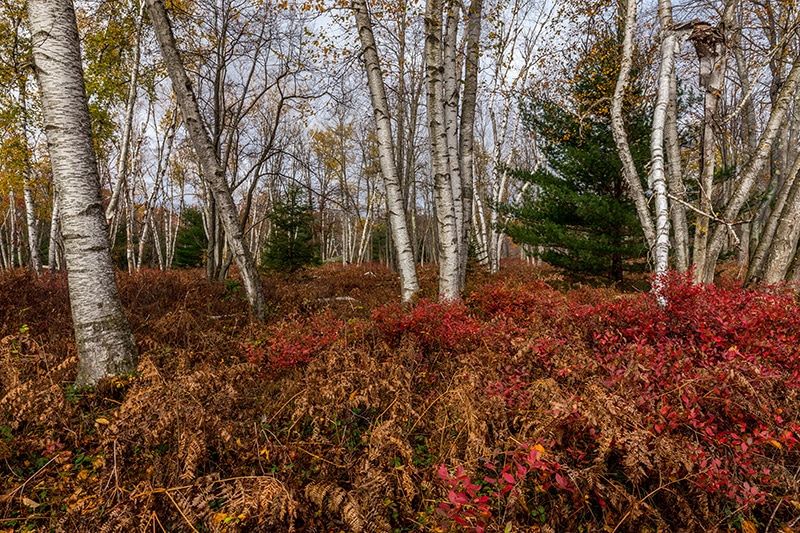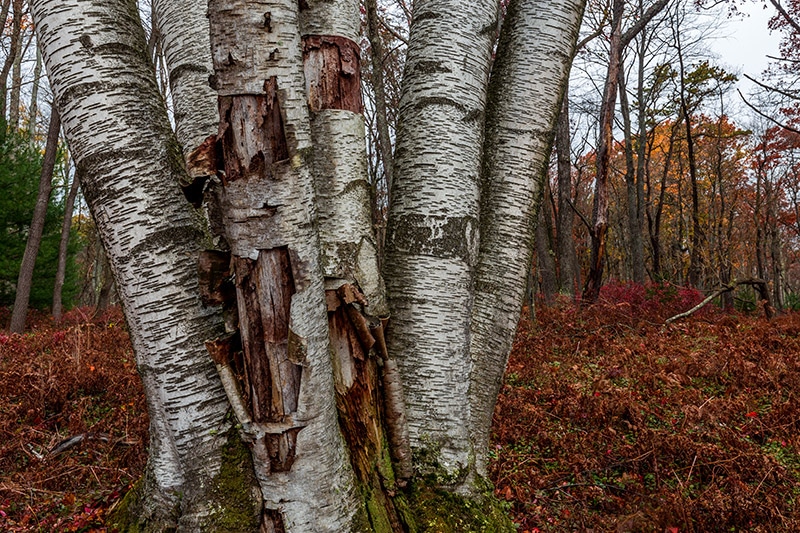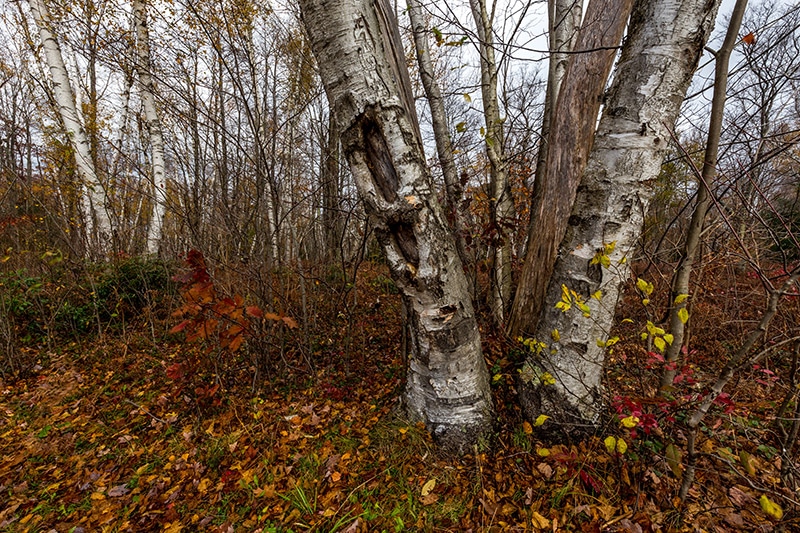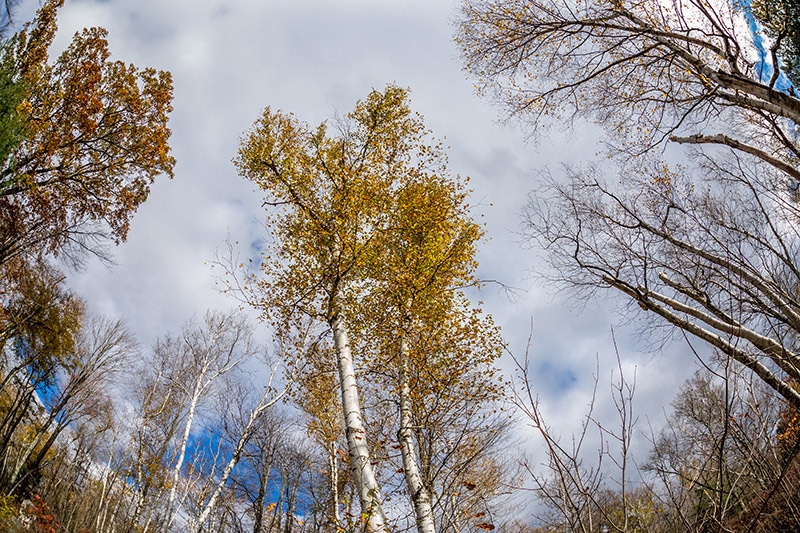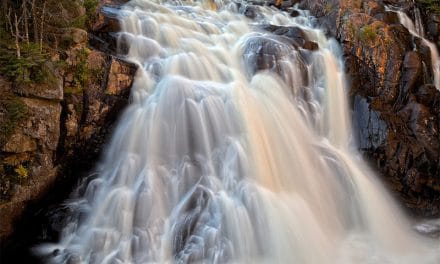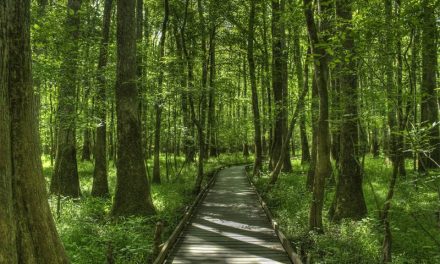
The Marion Brooks Natural Area is part of the Moshannon State Forest in northwestern Pennsylvania. This beautiful area is fairly remote and is noteworthy for a large stand of beautiful white birch (or paper birch) trees. There is plenty of nature in this area with the surrounding state forest land and the Pennsylvania Wilds, but the white birch trees make the 900+ acre Marion Brooks Natural Area stand out.
White birch trees typically are not found as far south as Pennsylvania, making this stand unique. At the Marion Brooks Natural Area you will find a variety of types of trees, with a high concentration of white birch, especially near the parking area. These trees are ideal for photography, making this one of my favorite locations in the state of Pennsylvania.
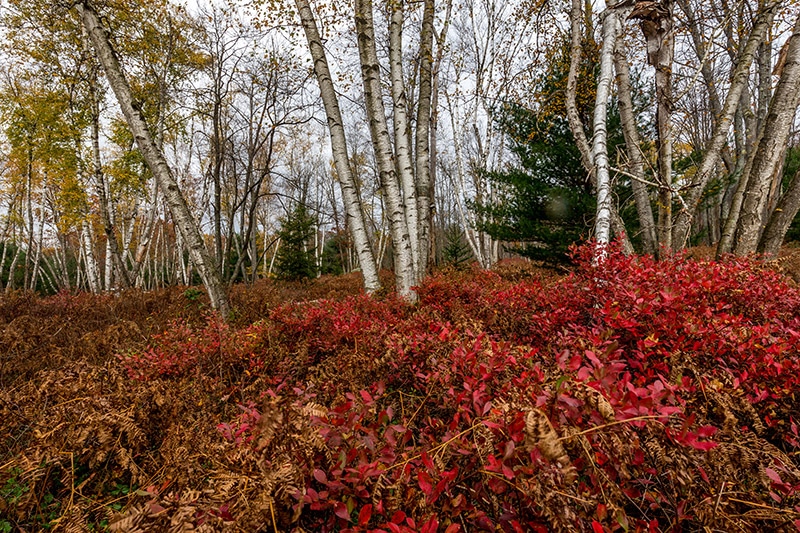
All of the photos in this article have been processed using the Landscape Legend Lightroom Presets. Learn more about Landscape Legend here.
Getting to the Marion Brooks Natural Area
The Marion Brooks Natural Area is located in northwestern Pennsylvania, about a one-hour drive from State College, which is the location of Penn State University. This part of the state consists of public land managed as state forest and designated wild areas. This is one of several “natural areas” within the state forests. There are plenty of other places to photograph in the area as well, but this area does stand out from the rest.

The Quehanna Highway provides easy access to the Marion Brooks Natural Area. There is a small parking area just off the highway where it intersects with Losey Road, which is an unpaved state forest road. Although this is a beautiful location, you may have it all to yourself depending on when you visit.
Although the area is more than 900 acres in size, the highest concentration of white birch trees is right by the parking area, so it’s not necessary to do a lot of hiking or exploring to find great photo opportunities. There are a few trails in the area, including a 3-mile loop trail from the parking lot, but I prefer to wander the area near the parking lot to find the photo opportunities.
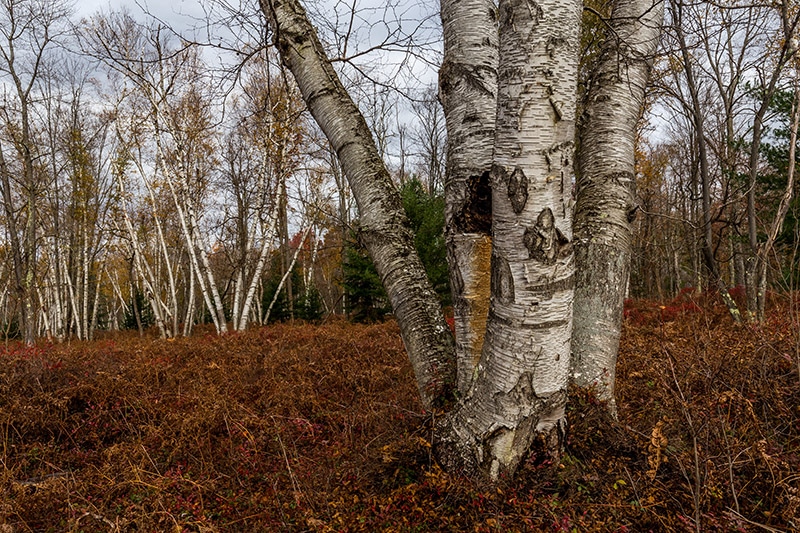
Other longer trails cross through the area, including the 76-mile Quehanna Trail and the Mosquito Creek Trail.
The GPS coordinates of the parking area are: 41.26504, -78.27828
→ Learn about other amazing places to photograph in Pennsylvania.
Exploring and Photographing the Area
The best way to photograph the area, in my opinion, is to explore on foot and go off the trails. Although the forest is not extremely dense here, the undergrowth is rather thick, so be sure to wear hiking boots or shoes and thick pants. Of course, you’ll also want to pay attention to your surroundings and the direction you are heading because this is a very large forest area and getting back to the parking area can be a challenge if you’re far away and have no trail to follow.
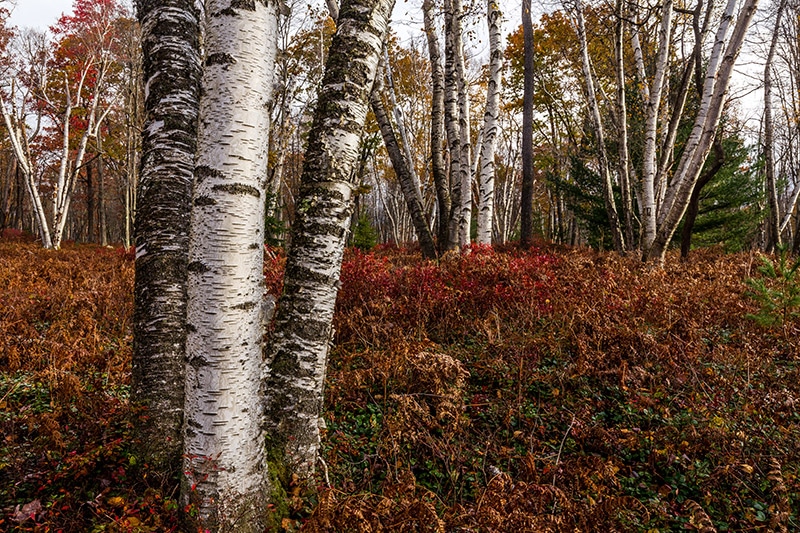
There are also some great photo opportunities available right from Losey Road without even needing to venture into the forest. Losey Road and Dieble Road basically surround the Marion Brooks Natural Area, along with the Quehanna Highway.
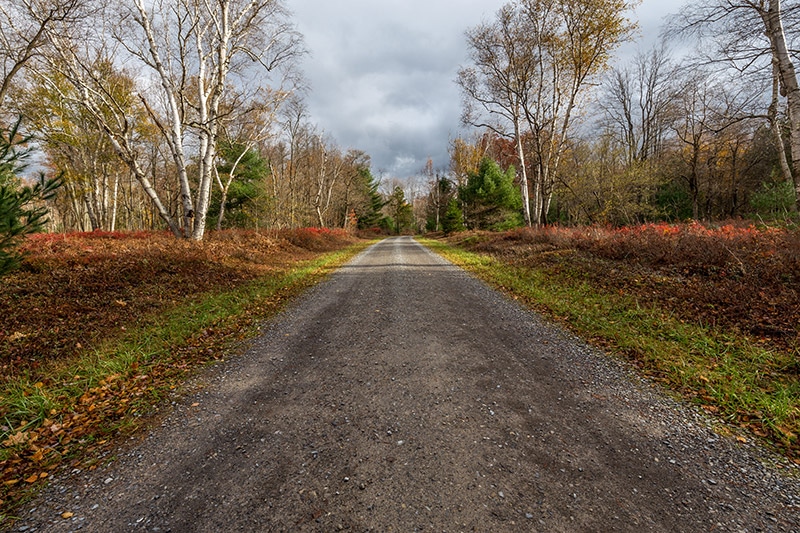
Looking down Losey Road (heading away from the Quehanna Highway) from the edge of the parking area.
In addition to the birches and other trees of the forest, there are a lot of smaller details on the ground that can be photographed as well. Mossy rocks, stumps, fallen trees, flowers and plants in the undergrowth all provide additional opportunities.
When to Go
Fall is a great time because of the beautiful autumn colors and their contrast with the white birch trees. I visited the last week of October, which was a little past peak time for the colors, but still beautiful. The undergrowth was more colorful than the leaves on the trees. Winter is another great season here with a snow-covered forest providing a much different look. During spring months you can photograph vibrant greens as the forest comes back to life after the winter.
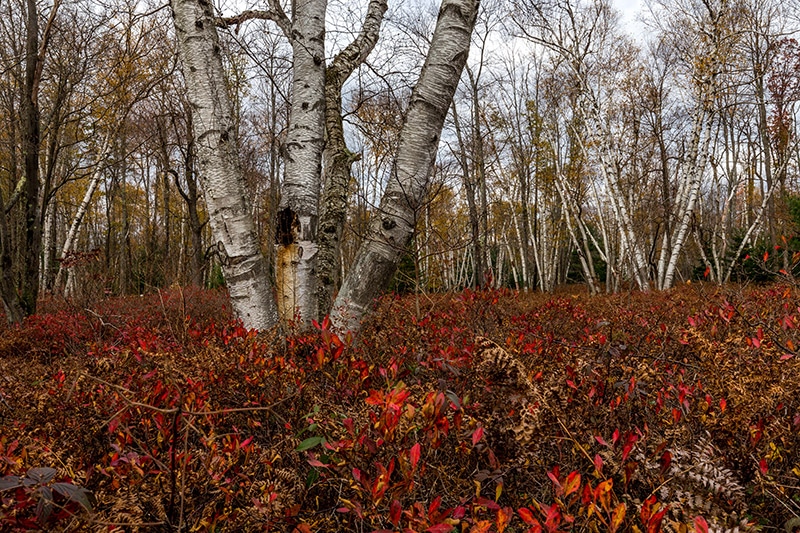
Recommended Gear
Tripod – Depending on the weather and lighting, some areas of the forest can be in deep shadows. With a tripod you will be able to use slower shutter speeds and still get sharp photos.
Wide Angle Lens – I used a wide angle lens almost exclusively while I was photographing the area. With a wide angle lens you can get close to one tree for some foreground interest, while still capturing a wide, vast scene behind it.
Polarizer – A polarizer can help to get more contrast in the sky. During my recent trip the sky was very cloudy with only a few short windows of sunshine.
Landscape Legend Lightroom Presets – For processing your photos, we recommend using our own collection of Lightroom presets created specifically for landscape and nature photos.
More Photos from the Marion Brooks Natural Area
